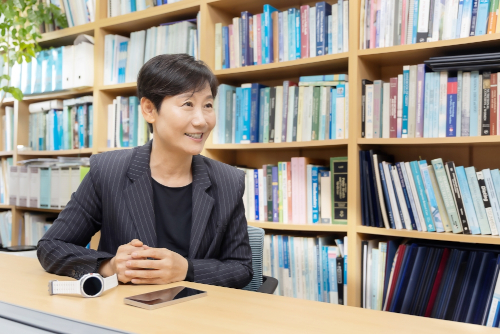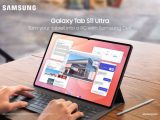
Measuring and Managing Antioxidant Levels Galaxy Watch 8
November 19, 2025It began with a simple question: What if you could measure your nutrition in real time — right from your wrist?
With the Galaxy Watch8, Samsung turns that idea into reality through the Antioxidant Index, the industry’s first measurable nutrition metric built into a wearable. In just five seconds, a thumb scan delivers precise carotenoid readings — a breakthrough once possible only through lab-based machines.
By shrinking advanced sensor technology into a compact watch module, Samsung has created a new benchmark in wearable health tracking, one designed to turn your everyday diet into an actionable metric for healthier aging. Achieving this required years of research, countless prototypes, and unwavering determination.
Breaking New Ground in Nutrition Tracking
In 2018, Samsung identified a critical gap in wearable technology. While devices could track steps, calories, and heart rate, there was still no simple way to understand how everyday diet choices impacted long-term health. Accurate nutritional biomarkers remained inaccessible due to the high cost of lab tests.
As people live longer, the focus is shifting from lifespan to healthspan — the quality of those extra years.
“In this context, antioxidation naturally gains attention as a method to slow down aging,” explains Dr. Hyojee Joung, public health nutrition expert from Seoul National University. “If antioxidant management is neglected, Reactive Oxygen Species (ROS) accumulate, increasing the risk of chronic diseases such as cardiovascular disease, diabetes, and cancer.”
This insight positioned antioxidants at the heart of Samsung’s mission. Engineers focused on carotenoids — powerful antioxidants and reliable indicators of fruit and vegetable intake — to create a wearable that could transform complex nutritional data into simple, meaningful health insights.
Challenge #1: Shrinking Lab-Grade Technology
Traditional carotenoid measurement uses Raman spectroscopy — laser-based, highly precise, and very bulky. The biggest challenge was clear: miniaturize lab-grade technology into a coin-sized sensor suitable for a watch.
After seven years of development and optimization, Samsung achieved a breakthrough with a miniaturized reflectance spectroscopy sensor using multi-wavelength LEDs and a custom photodetector array.
“Our breakthrough was integrating reflectance spectroscopy with LEDs, allowing us to miniaturize the tech without sacrificing accuracy,” says Jinyoung Park, developer from Samsung’s Digital Health team.
Unlike lasers, LEDs emit broader wavelengths. By analyzing how much light the skin absorbs across multiple wavelengths — captured by photodiodes — the watch estimates carotenoid levels with impressive precision. Adaptive algorithms calibrate data in real time to ensure accuracy for every user.
Challenge #2: Ensuring Accuracy for Everyone
Miniaturizing the sensor was only half the task. It also needed to work reliably across diverse skin tones and conditions.
To reduce melanin and hemoglobin interference, Samsung chose the fingertip as the measurement site. Light fingertip pressure helps minimize blood flow, improving accuracy for all users.
Extensive clinical trials at Samsung Medical Center validated the sensor’s performance across hundreds of participants, paving the way for a truly inclusive, real-world feature.
How the Antioxidant Index Works
Carotenoids — the natural pigments found in colourful fruits and vegetables — cannot be produced by the body. This makes them a reliable reflection of dietary habits and long-term antioxidant status.
The Galaxy Watch8 categorizes carotenoid levels into:
- Very low: Less than 50% of the WHO’s recommended 400g of fruits and vegetables per day
- Low: 50%–100%
- Optimal: 100% or more
“Carotenoids accumulate gradually, so short-term dietary changes won’t appear immediately,” notes Dr. Joung. “Our research shows meaningful increases after one to two weeks of improved fruit and vegetable intake.”
Lifestyle factors — including sleep, stress, and physical activity — also play a key role in antioxidant levels. Combined with Galaxy Watch8’s sleep analysis, activity tracking, and Vascular Load monitoring, the Antioxidant Index provides a holistic picture of overall well-being.
Reimagining Health, One Scan at a Time
“New wearable sensors can help people build healthier eating habits by tracking and encouraging sufficient daily intake of fruits and vegetables,” says Professor Yoonho Choi from Samsung Medical Center. “Over time, this can help prevent certain cancers and age-related diseases.”
Antioxidants are an emerging frontier in preventative healthcare, yet progress has been limited by the difficulty of accurate measurement. With the Antioxidant Index, Samsung moves the industry forward — delivering meaningful innovation that empowers users to take proactive control of their health.
By identifying risks early and promoting long-term healthy habits, the Galaxy Watch8 redefines what a wearable can do, shifting from an activity tracker to a true partner in preventative wellness.


